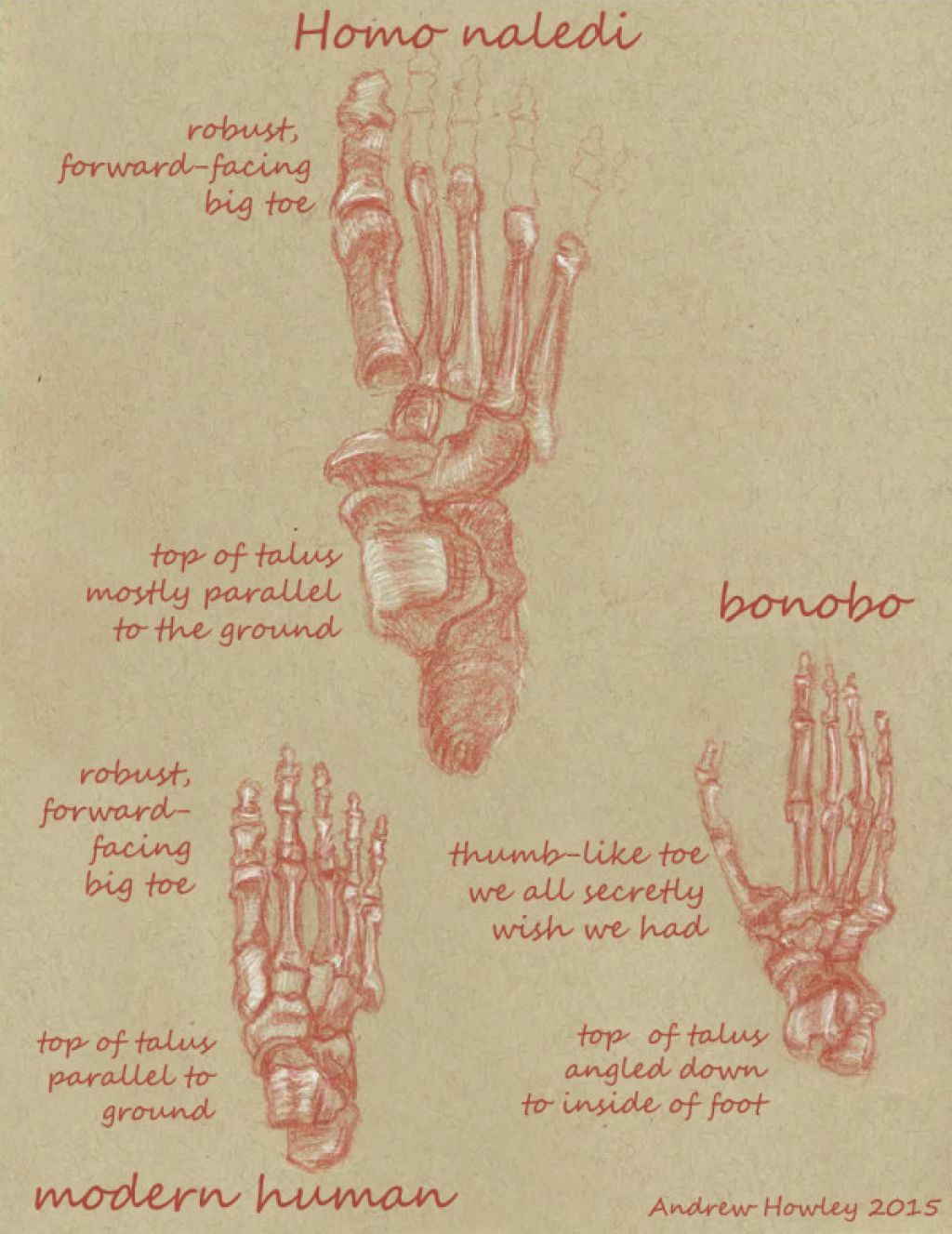Homo naledi’s Nike-Ready Foot
After the excitement of Homo naledi’s discovery and extraction from deep in a narrow cave in South Africa, and the implication that these non-humans may have intentionally carried their dead deep into the earth, we are left with the bones themselves, what they tell us about these creatures, and what new questions they inspire.
These sketches and notes come from interviews and conversations during both the 2013 Rising Star Expedition and the 2014 workshop where established experts and early-career scientists came together to analyze the 1,550 fossil pieces.
The Foot
There was a recurring comment at the workshop in June, 2014, that analyzed the first batch of remains of what would come to be called Homo naledi: The body seemed primitive in the core, but more human at the extremities. It was as though the body parts that contacted the physical world most directly were adapting to new conditions and uses, but news of the innovations hadn’t yet reached the heartland.
The foot was a big part of this.

During the excavations in November, 2013, before the foot bones proper were found and reassembled, a single bone from the ankle widened eyes and led the team to expect that whatever this creature was, it was pretty efficiently bipedal.
The bone was the talus, which sits right below the tibia, or shin bone, and it had a remarkably level top. In humans, the top of the talus is level from side to side, allowing the leg to rotate directly over the foot in the path of motion. In other apes, the top of the talus is tilted, pushing the shinbone and knee away from the center of gravity, and giving them a bowlegged appearance. (This is possibly why the guys in Planet of the Apes are such fine horsemen. Err, “horseapes.”)
So before a single toe was found, the team had an idea of what to expect.
When the toes were finally unearthed, they were found to be slightly curved, but mostly straight, with the big toe coming up right alongside the others. For anyone else who’s ever wished they could use their feet like hands, Homo naledi was no better off than we are. What it lacked in gripping ability though, naledi’s foot made up for with support and efficiency of back and forth motion.
The feet of bonobos and other apes have an arch similar to ours that runs from the heel to the toes, but they are mostly flat from the inside to the outside. Naledi however begins to show the “transverse arch” that literally puts a spring in your step. This dual-arching structure wouldn’t do much for an animal that’s shuffling with a side-to-side sway or leaning forward on its hands, but like the arches in a cathedral holding up a soaring ceiling, it does wonders for someone walking with all their weight balanced over those two back feet.
When the first bones emerged from the cave, no one knew what creature they had come from. With feet made for walking like us, dexterous thumbs, and a nice round skull though, it soon became clear that whatever it was, it was remarkably familiar looking.
The stories of its discovery and excavation make Homo naledi unforgettable, but its bones are what make it like us.